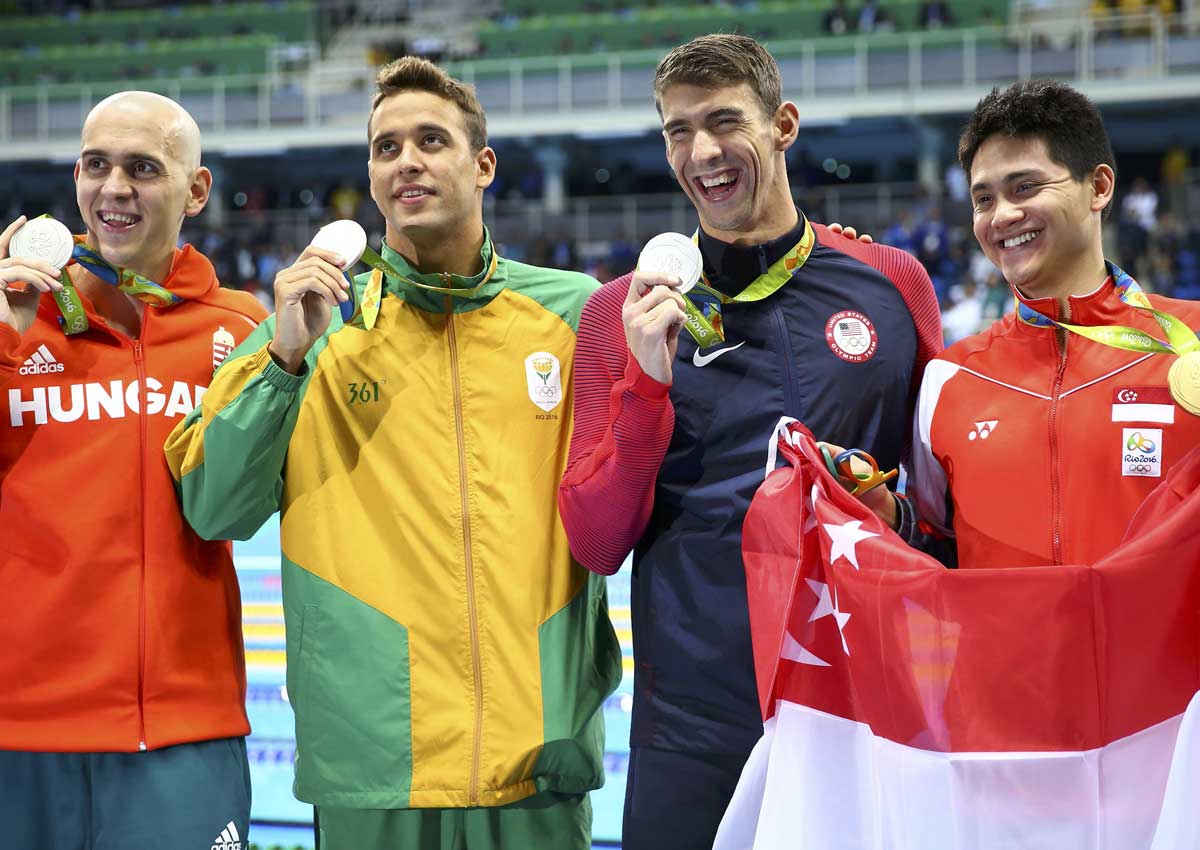As we celebrate Joseph Schooling’s gold-medal win in the Olympic’s 100m butterfly, it’s easy to forget the other interesting result in that race – three swimming legends sharing the silver medal in a tie.
The United States’ Michael Phelps, South Africa’s Chad Le Clos, and Hungary’s Laszlo Cseh all clocked in at 51.14sec on Friday night in Rio de Janeiro, just 0.75sec behind Schooling’s 50.39sec.
Modern timing systems are capable of measuring time to the millionth of a second, so why doesn’t the world swimming governing body, FINA, increase its timing precision by adding thousandths-of-seconds?
The answer to that question was put forth in a simple and very informative post on Deadspin.com on Friday.
Timothy Burke wrote in that article that FINA used to time to a thousandth of a second, but stopped after Sweden’s Gunnar Larsson beat American Tim McKee by 0.002sec in 1972 in the 400m individual medley.
The reason was that in a standard Olympic 50m pool, “at the current men’s world record 50m pace, a thousandth-of-a-second constitutes 2.39 millimeters of travel”. However, FINA’s pool dimension regulations allow a tolerance of 3cm in each lane. So there is no way to ensure that “the winning swimmer didn’t have a thousandth-of-a-second-shorter course to swim”.
Burke went on to explain that it is nearly impossible to construct concrete swimming pools to any tighter tolerance; and “effective length of a pool can change depending on the ambient temperature, the water temperature, and even whether or not there are people in the pool itself”.
sinsh@sph.com.sg


















































